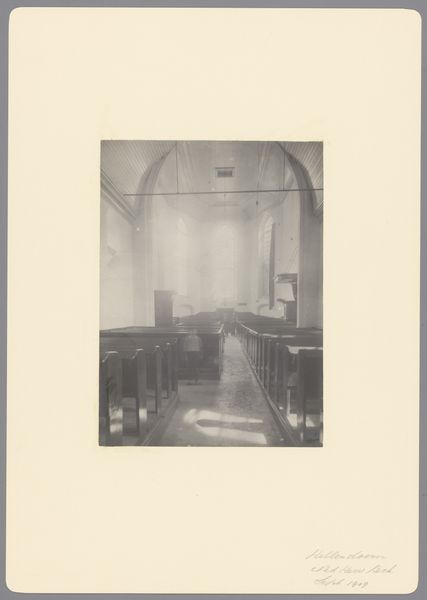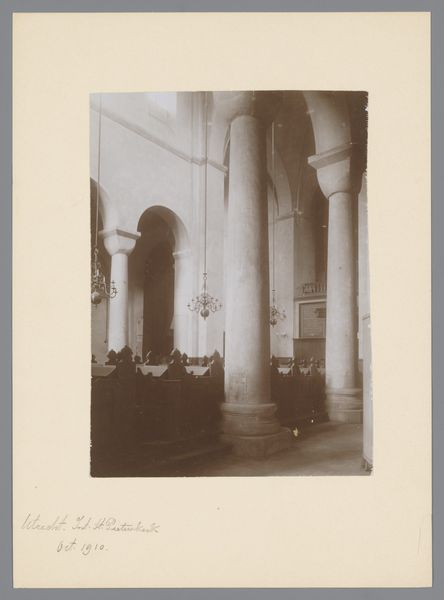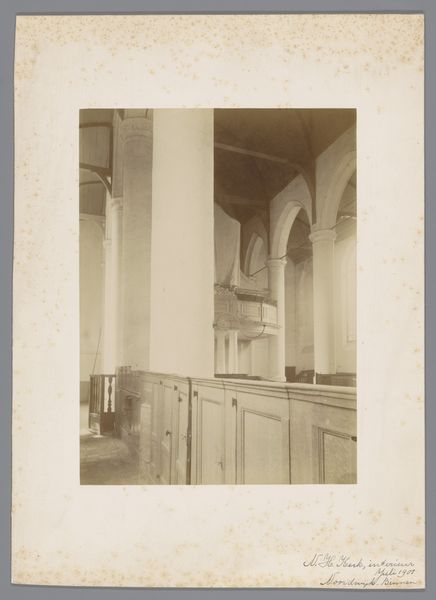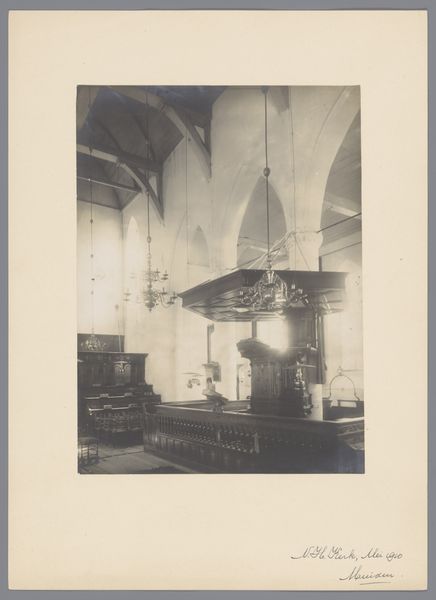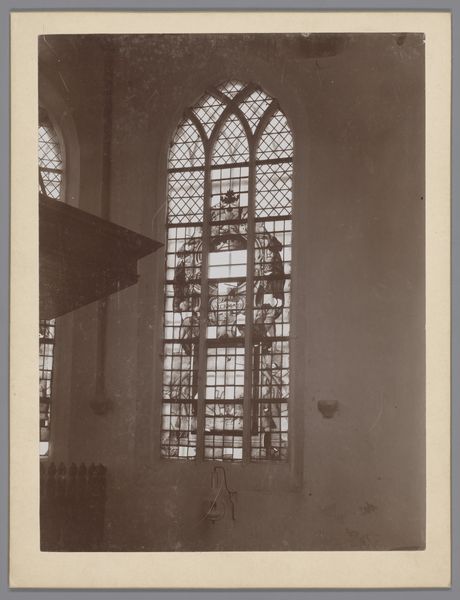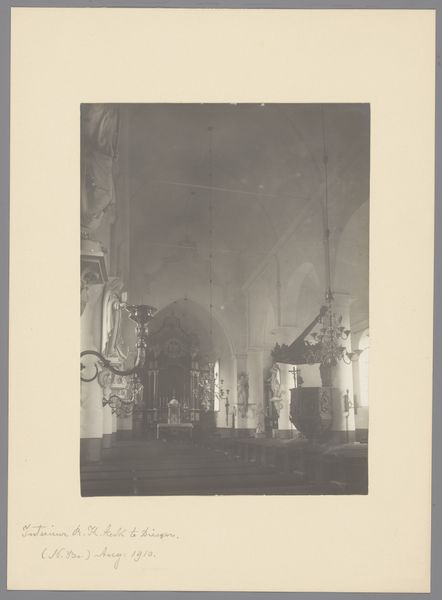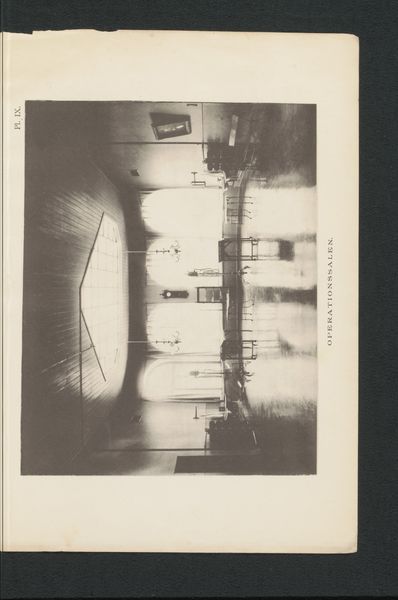
Dimensions: height 227 mm, width 155 mm
Copyright: Rijks Museum: Open Domain
Curator: This is an interior view captured in 1911, titled “Interieur van de Hervormde Kerk te Hulst." What strikes you first about it? Editor: That stark light flooding in. It feels almost blinding, pushing the architecture and details into a subdued, sepia-toned world. There is an interesting use of light. It immediately makes you question, what does this intense brightness obscure, or illuminate about worship, gender and identity at this moment? Curator: It’s interesting how the anonymous photographer emphasizes that light. Notice the construction, too – the timber supports in the roof, those stark lines. It all seems very deliberate. It evokes a space that’s meant to be functional. Editor: Yes, the utility and material presence is evident. Looking beyond that light, one can ask how this seemingly austere aesthetic connects to power dynamics in the community. Does this restraint resonate with the surrounding sociopolitical atmosphere and what narratives might get erased here, in favor of more ' acceptable ' religious, national, and communal identities? Curator: Good points. If you study the materials, though, you can read how the building, the materials, embody social meaning. The arrangement and presentation are essential to the intended impact and meaning. We see labor implied by construction. The repetitive pattern of the pews speaks volumes too, about communal experience through this architectural and construction plan. Editor: Absolutely, labor is a critical lens. Consider also, for a moment, how architectural spaces dictate and reinforce hierarchies and who the labor really profits. The bareness almost reads like a metaphor for the kind of self-denial preached and demanded within that community at the time. And maybe, as much today as then, certain people benefit. Curator: The very photographic process itself, the materials and time, also imply labor. The choice to depict it this way, these deliberate, visible seams – not erasing those are artistic choices, too. Editor: Seeing the photograph through this lens gives us clues as to how this moment reflects anxieties around early twentieth century nation and community identity and religion as a product to consume, as you noted before. Thanks for showing that point of view! Curator: Thank you. And by recognizing the hand of its construction, perhaps we find new meaning from this seemingly humble document.
Comments
No comments
Be the first to comment and join the conversation on the ultimate creative platform.
